Another contextual change, at least at this point in the return to travel, is the substantial demographic shift –›particularly in premium classes – from business travellers to leisure travellers.
People whose pent-up demand to see the world while staying as safe as possible from Covid, and whose standards for being acceptably close to another person no longer include being shoulder-to-shoulder, nose-to-seatback in economy, are driving much of the recovery at the front of the aircraft.
“Three or four years ago, the split was that 70% of those passengers were business passengers,” says Matthew Nicholls, sales director at Tapis Corporation. “Now it is about 70% leisure travel.”
The look and feel – in aircraft interiors terms, the CMF, or colours, material and finish – of a cabin designed for business travellers is substantially different from one designed for leisure travellers, who prefer a warm and welcoming environment rather than a flying office.
“Leisure passengers do not want a cold interior; they have different values,” Nicholls says. “They want to feel how comfortable they are in the seat. Can they sit with their other traveller group? And do they have inviting colours that make them excited to go?”
For the industry, Nicholls highlights, “the purchasing decision-making process is really different for a leisure passenger and a corporate passenger, which overall affects the design of the interior.”
A key focus for AIX 2022 will be the new longer-range narrowbody aircraft, and particularly the wildly successful Airbus A321neo, its A321LR long-range variant, and the A321XLR extra-long-range version that can fly some ten hours nonstop.
“A major talking point will be long-haul single-aisle products,” explains Angus Baigent, marketing and PR manager at Hamburg Aviation, the city-state's industry cluster, which also runs the Crystal Cabin Awards, often referred to as the Oscars of passenger experience.
“Another major issue will be solutions focused on sustainability and environmental impact. We expect that the conversations around that will involve everyone, and include aspects that don’t get a lot of attention outside the industry like end-of-life recycling and MRO processes,” Baigent continues. “One more issue will likely be the “reramp-up” of production, especially for single-aisle aircraft. Again, the interactions of suppliers, OEMs and airlines will be crucial.”
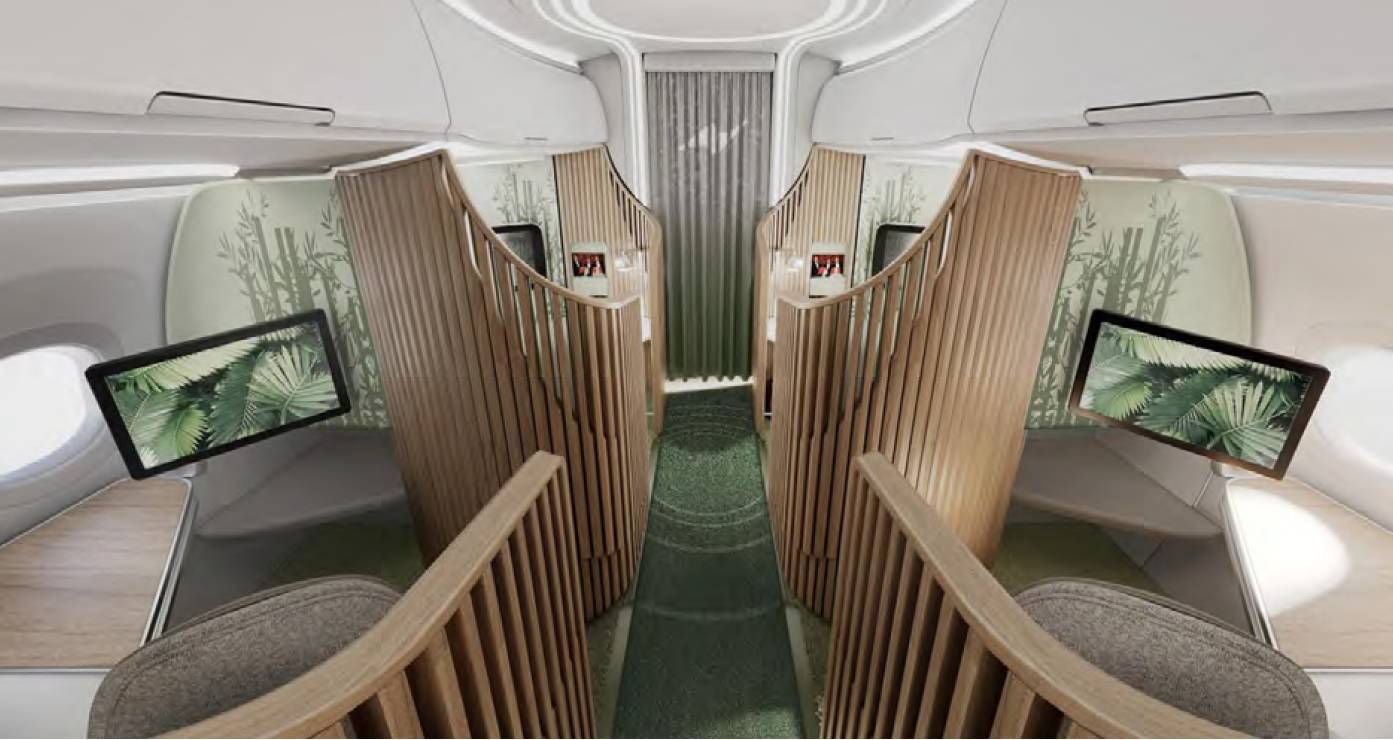 Teague and NORDAM’s Elevate concept has been shortlisted for a Crystal Cabin Award, with the ceremony taking place at AIX. The innovative ‘floating furniture’ is attached to wall braces and uses contouring to build an organic, homelike space concept that still enables carriers to fit as many seats as traditional designs.
Teague and NORDAM’s Elevate concept has been shortlisted for a Crystal Cabin Award, with the ceremony taking place at AIX. The innovative ‘floating furniture’ is attached to wall braces and uses contouring to build an organic, homelike space concept that still enables carriers to fit as many seats as traditional designs.
Evolving passenger experience
The Covid-19 pandemic is often referred to as a great accelerator of existing trends. This is, and was, certainly true in aviation and in the passenger experience. Older, less efficient aircraft, like the Boeing 747 and Airbus A340, practically disappeared overnight, while many operators of the Airbus A380 — for many years the showcase of passenger experience innovations —›either retired their superjumbos or plan to do so in the near future.
“Many airlines have been rethinking their fleets and planning aircraft upgrades during Covid,” highlights Inmarsat’s Steenstrup. “While passenger counts and flights are not yet quite back at pre-Covid levels globally, we are seeing in-flight connectivity usage exceeding pre-Covid rates, so we’ll be interested in discussing the implications of this with all members of the aircraft interiors ecosystem.”
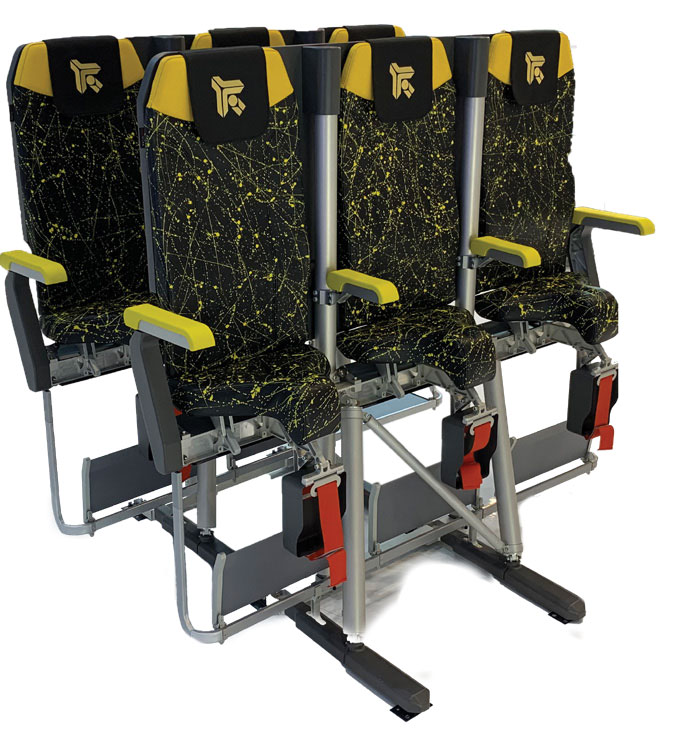 John Walton
John Walton
Tapis, best known as a manufacturer of fabric and leather for seat covers and carpets, is taking an ecosystem approach as well. The company is using the stand space that in previous years might have been given over to walls of look-and-feel fabric to display its wares on a variety of concept and actual seats, including the Acro Serie 6 economy class seat already flying w Spirit Airlines.
“We are featuring an array of innovative seats, including Butterfly 2.0 with a couple of rows and a monument,” explains sales director Matthew Nicholls.
“We’re also going to have the Interspace seat by New Territory and Universal Movement. The seat is a premium economy seat that is designed to be easier to sleep when you are in an upright position,” Nicholls says.
Interspace features deployable padded wings for extra privacy and is aimed at exploring the market for a non-lie-flat sleeper product.
Like many companies, Tapis is making the most of being back in person, emphasising the ability to touch actual physical products at the show. This includes a blind challenge asking visitors to compare comfort across three different seats in the same economy row with cover materials, including “our new Atago product, which is designed to do two fundamental things,” Nicholls says: “to reduce weight and provide comfort.”
Atago combines an anti-flammability backcloth with the look, feel and touch haptics of the Ultrafabrics product line, which is a PVC-free polyurethane fabric designed to resemble leather.
In addition to being more sustainably made than previous products, “the Atago product saves over a pound per passenger,” Nicholls says, “so that could translate to 200-250lbs per aircraft depending on the configuration.”
Thompson Aero Seating, too, is bringing new products, explains Andy Morris, vice president for commercial, including VantageDUO. “This is a brand-new innovation in seating, created specifically for the fast-emerging medium to long-range single-aisle aircraft. Following the theme of single-aisle, the VantageSOLO will also be showcased. This is a fully flat bed with direct aisle access for every seat. The original fully flat Vantage seat will be exhibited, along with the refreshed VantageXL, which offers a flatbed and generous extra personal space.”
Within the in-flight connectivity side of the industry, explains Viasat’s commercial aviation vice president and general manager Don Buchman, “the acceleration of digital usage and expectations based new habits formed during the pandemic is a key trend globally, and certainly within the industry.
The expectations fast connectivity, no matter where you are connected, are high, and that’s exciting for us.”
“Connectivity is increasingly a proxy for entertainment,” Buchman says, highlighting that this is “not wildly different from our living rooms today, which are delivering entertainment via streaming services, in many cases, in place of cable television. And now those streaming services can come with us when we travel. In fact, 90% of passengers bring a PED on a flight. The satellite capacity we can unleash enables those experiences for all passengers, and all their devices, on the aircraft.”
Showing real innovation
On the seats’ side, for Stelia Aerospace’s Alain Bordeau, the show is an opportunity both to show off innovations and to see what else is out there on the market: “we are expecting to find not only post-Covid trend products but also new concepts to bring back the passengers’ desire to fly again.”
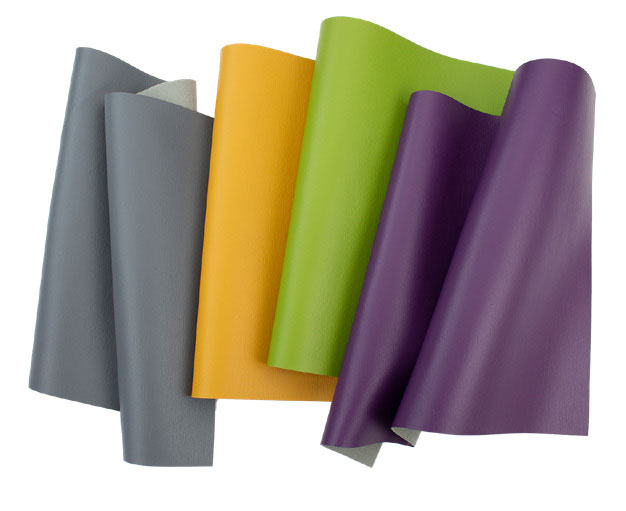 Tapis
Tapis
Stelia plans to show off new products to address the narrowbody market but also to keep focusing on its bread-and-butter widebody seating options. This is similar to the messages coming out of other seat makers.
To perhaps oversimplify, everyone is talking about narrowbody premium seating, especially in the long-haul segment, but the number of seats to be produced per contract is relatively low because for many airlines the long-haul single-aisle fleets will be relatively small, yet high value, niche players. A major airline might have a fleet of A321XLRs numbered in the twenties, with a number of business class seats per aircraft in the low teens – compared with the mid-forties for an A350 or 777..
Amortising the design, development, certification, customisation, production and installation costs for a premium seat order on this scale will be a challenge and it is that the industry will need to addr in discussions at AIX.
Moving to in-flight entertainment, Panasonic Avionics, meanwhile, used the time during the pandemic to delve deeper into the trends around customer needs, using its research to create new options for airlines and for passengers. The retirement of older aircraft an the delivery of many newer cabins have also meant that the proportion of aircraft with new technologies, like 4K screens, Bluetooth-enabled audio, and smartphone apps that allow second-screening and entertainment control from a passenger’s hand has increased.
“A large trend that we are seeing is that airlines, especially in Asia and the US, are embracing the value of in-seat IFE solutions on their narrowbody aircraft,” vice president of product development Andy Masson says. “The economic consequences of the pandemic, combined with the great strides OEMs have made, have resulted in greater use of narrowbody aircraft on long-haul routes, and this has driven a shift in thinking about the in-flight experience on those aircraft.”
Masson highlights that “this was borne out recently by United Airlines who have installed embedded IFE, including Bluetooth audio, on their new Boeing 737 MAX fleet. That aircraft type now has the highest net promoter score of any that they operate.”
Sustainability and net zero
The biggest question in aviation is its contribution to climate change through its emissions, and the passenger experience side of the industry is no different.
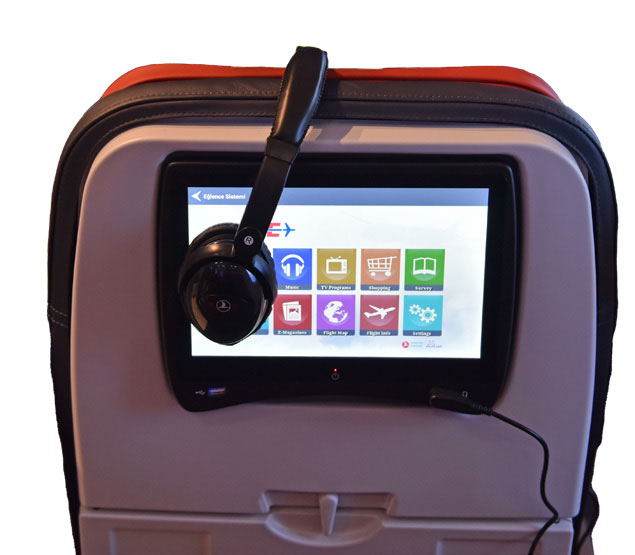 AIX Hamburg
AIX Hamburg
“Even before the pandemic, there was a huge movement driving sustainability in aviation and this hasn’t gone away,” says AIX event director Polly Magraw. “With suggestions of a slower pace of recovery for business travel amid the introduction of corporate carbon budgets and heightened awareness surrounding our individual and corporate carbon footprint, we anticipate this will continue to be one of the biggest challenges and opportunities for the industry to explore."
Alain Bordeau of Stelia concurs. "The challenge, for us, is to draw the right line between passenger expectations, like privacy, a stressless environment, the desire to fly again in a more sustainable way and airlines which are in a recovery mode. This leads us to not look back but to build vision of the cabin of the ure. I’m very optimistic about it because this is exactly the DNA of our industry since the Wright brothers.”
“Sustainability is going to be an overarching theme this year,” agrees Sekisui Kydex aviation marketing business manager Ben Smalley. “I’m eager to understand the different interpretations and actions toward sustainability in the cabin sector. With the development of our Innovation Centers, we are hoping to find exhibitors open to collaboration to advance the aircraft interiors industry.
While we bring one aspect of a component, it often takes multiple different technologies to create an innovation jump.”
Kydex plans to highlight a strong sustainability theme, with a walk-through of the recyclability of its thermoplastics that physically demonstrates the materials at each stage in its lifecyle.
Passenger experience is getting personal
Personalisation and customisation of the passenger experience was at the forefront of the trends space prior to the pandemic and this has only accelerated since. “Passengers want a personalised experience,” says AIX’s Polly Magraw, highlighting that “the rapid adoption of touchless technologies may have been borne out of a necessity to enhance hygiene in the cabin and reduce contact points for passengers. However, such technologies have been around for much longer and can benefit the aviation industry in a number of ways, including offering peace of mind to passengers.”
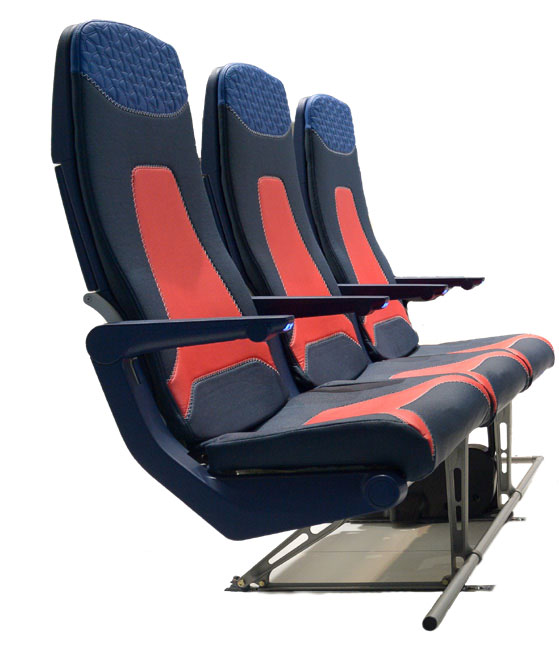 AIX Hamburg
AIX Hamburg
“Take biometric technologies and facial recognition — now widely used in airports around the world,” Magraw suggests. “Novel approaches to biometric integration in the cabin are evolving the touchless agenda. Take Gentex for example, nominated for a 2022 Crystal Cabin Award, the computer vision and aerospace company was recognised for its iris scanning system that can scan the aircraft cabin to authenticate crew when entering the cockpit.”
Of course, being able to quickly and even automatically identify passengers is helpful when it comes to personalisation options, like a to-watch list moving with the passenger between connecting flights, service preferences, like a favourite drink being presented as an option without having to ask for it, and special offers for in-flight shopping, whether delivered on the aircraft or to the passenger’s home.
Indeed, much of this agenda has multiple benefits around digitalisation and hygiene. “At the height of the pandemic, our focus was on helping airlines deliver touch-free in-flight experiences to their passengers. We did this with the introduction of the Welcome Aboard Collection,” explains Panasonic’s Masson. “This consisted of both IFE and other solutions designed to help augment airlines’ efforts to create a safer and healthier travel experience, while reducing costs and reinforcing their commitment to the passenger and their crew. The touchless agenda has now evolved in IFE into the desire for passengers to be able to use their own devices on board.”
However, Tapis’ Matthew Nicholls sounds a note of caution about going too far, and turning touchless into something impersonal. Touchless, he says, “is definitely going strong — it has only gained momentum. A lot of people have incorporated it, even too much. Just because you can make it touchless, doesn’t mean you should. In some experiences, you are taking away from the passenger experience. I believe that it is still a hot topic, actually a very hot topic… to the point that some people might be overdoing it.”
The hygiene factor
“Hygiene and safety standards will continue to be more stringent,” predicts AIX event director Polly Magraw. “Prior to the Covid-19 outbreak, passengers rarely considered how much bacteria could be on a cabin surface or the floor of the aircraft they were flying in. Now, as we emerge from a health crisis, there is a widespread expectation of airlines to minimise exposure and enhance health and safety.”
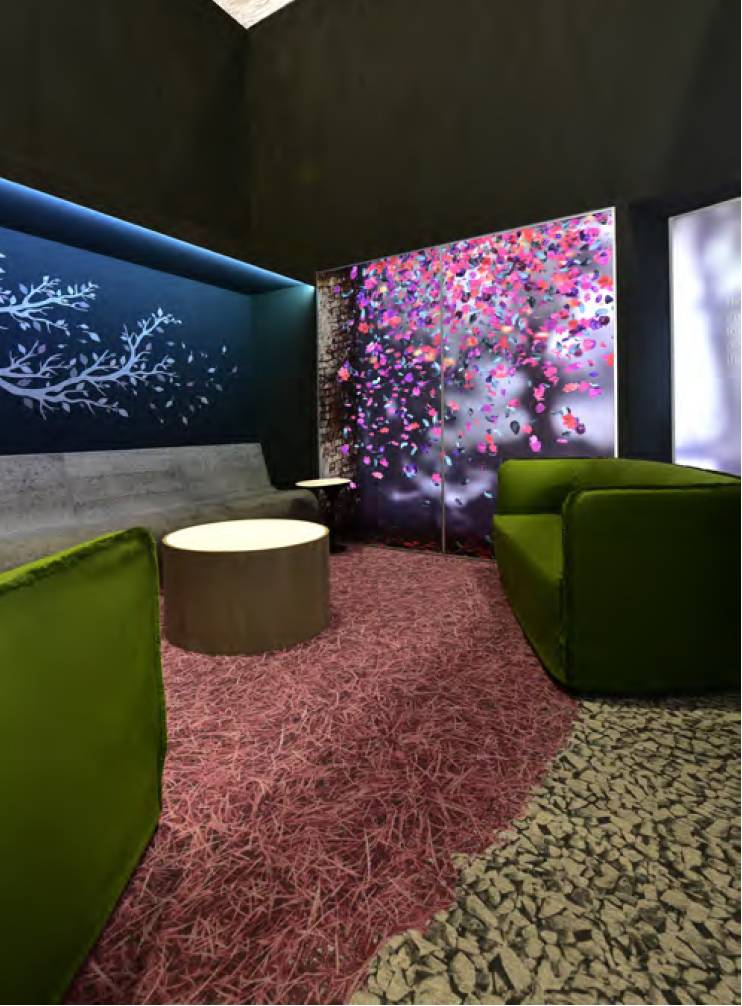 Kydex plans to highlight a strong sustainability theme, with a walk-through of the recyclability of its thermoplastics. Sekisui Kydex
Kydex plans to highlight a strong sustainability theme, with a walk-through of the recyclability of its thermoplastics. Sekisui Kydex
Much of the discussion in 2020 revolved around antimicrobial surfaces which can kill viruses, such as the SARS-CoV-2 pathogen that causes Covid-19 and also harmful bacteria.
There are clear benefits to using these products, especially if they cut down on the time, staff time and materials cost of using chemical cleaners during the turnaround of an aircraft.
Yet, could these hygiene innovations become a figurative hygiene factor – one that comes to be expected as standard.
“Antimicrobial and antiviral are busy topics, but not as much adoption as we would have initially expected,” says Ben Smalley of thermoplastics manufacturer Sekisui Kydex.
“A lot of raw material technologies have been explored and thoroughly tested at all levels of the supply chain.
There are still challenges associated with acceptance of best paths forward as it relates to kinetics of efficacy, balances of performance versus cost, and sustainability of options.”
Notably, Smalley says, “customers aren’t willing to pay a premium for it at this time as it brings up questions of fleet consistency that could require an entire retrofit and can have marketing challenges through the red tape of what they can and cannot say about antimicrobials.
This trend will re-emerge if a major airline takes a position to implement anti-microbial across their fleet, and/or when the industry recovers a bit more.”
Indeed, “antiviral and antimicrobial surfaces are or will become a standard,” says Stelia’s Alan Bordeau. “Our customers are not ready or able to pay more for a standard.”
All across the 2022 show, Magraw predicts, “we anticipate a greater emphasis on reconnecting and doing business face to face.
The show is renowned for offering the industry a platform to showcase the latest product innovations, and early indications suggest that many of our exhibitors will be taking the opportunity to announce brand new launches and product updates.
Learning opportunities will also continue to play a key role at the event as the industry comes together to collaborate and respond to the challenges the industry is facing on the road to recovery.”
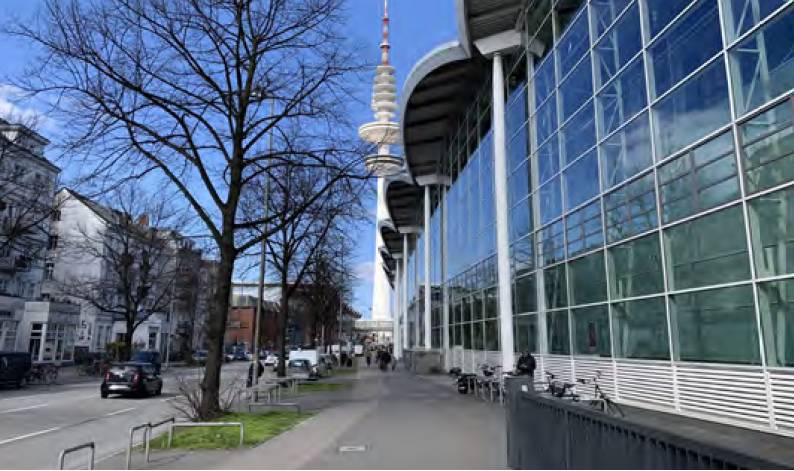 The Aircraft Interiors Expo hall’s exterior and interior. John WAlton
The Aircraft Interiors Expo hall’s exterior and interior. John WAlton Spanning eleven halls of the massive Hamburg Messe expo centre, and with more than 400 suppliers exhibiting, the show is so enormous that newcomers often discover late in the week that there are entire halls of exhibitors that they have not yet visited.
Spanning eleven halls of the massive Hamburg Messe expo centre, and with more than 400 suppliers exhibiting, the show is so enormous that newcomers often discover late in the week that there are entire halls of exhibitors that they have not yet visited.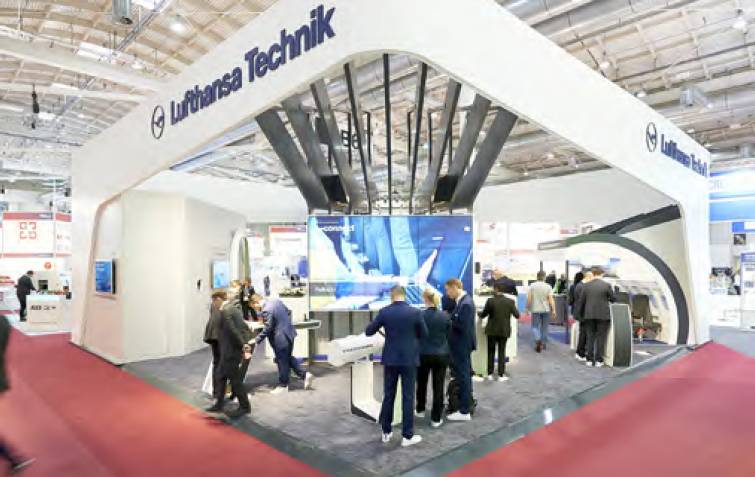 AIX Hamburg
AIX Hamburg




